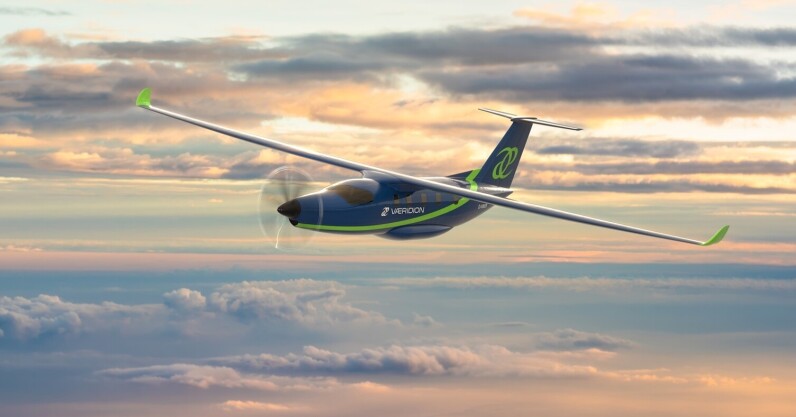
It’s been a tough year for air taxi startups. The UK’s Vertical Aerospace is running short of cash, while Germany’s Lillium faces bankruptcy. Targets for commercialisation keep getting extended. Investors are hesitant to commit.
The reason for all the struggles is pretty simple. Building, certifying, and commercialising brand-new aircraft designs like electric vertical take-off and landing aircraft (eVTOLs) is complex, notoriously expensive, and depends on lengthy regulatory processes.
That’s partly why German startup Vaeridion is pursuing a simpler, potentially cheaper, route to electric flight using an aircraft it calls the “microliner”.
“The microliner looks like a regular plane and it takes off from a runway — the only difference is that it will be powered by batteries,” Vaeridion’s co-founder and CEO, Ivor van Dartel, told TNW. “For operators and passengers, the experience will be essentially the same. Similar to what Tesla did for cars, but for planes.”
Today, Vaeridion announced that it has secured a Pre Application Contract (PAC) with the European Union Aviation Safety Agency (EASA), in a big step towards commercial flight.
Think of this contract as a dress rehearsal for aircraft certification. Before a company can officially apply for approval to fly its aircraft (called type certification), this contract lets it discuss the process with regulators, get feedback on its design and plans, and identify potential hurdles.
EASA’s pre-application service was launched last year. Vaeridion said that it is the first general aviation manufacturer to win a contract under the scheme.
Vaeridion’s head of engineering, Markus Kochs Kämper, called it “a huge milestone” in the development of its microliner. “This initiative allows us to de-risk our core technology and the path to certifying our electric aircraft prior to submitting a type certificate application,” he told TNW.
Van Dartel and Sebastian Seemann — both former Airbus and ZF engineers — co-founded Vaeridion in 2021. Their vision was to build an electric plane to replace jet-fueled aircraft on short-haul, regional flights.
Preliminary tests put the range of the microliner at about 500km, said the company. In 2022, almost a third of flights in the EU covered this distance or less, according to Eurocontrol. And it’s double what most eVTOL startups are advertising.
London to Amsterdam? Berlin to Munich? Madrid to Lisbon? No problem.
The microliner — fitted with a single propeller in its nose — can achieve this range despite a rather modest load of batteries, which are located in the wings for better weight distribution. The plane’s design was inspired by gliders, which have an aerodynamic shape to minimise drag and boost efficiency.
Vaeridion’s design is similar to existing regional aircraft, which could reduce development and manufacturing costs compared to more experimental eVTOL models that often require intricate propulsion systems and vertical lift capabilities.
Vaeridion plans to fly its first prototype in 2027. The company aims to make this first iteration fully conform to EASA’s type certificate requirements. This means it won’t have to build a costly demonstrator plane as well. Vaeridion will make one prototype, get it certified, and then it’s ready for the first commercial flights, scheduled for 2030.
By tapping into established aviation technologies and infrastructure, Vaeridion’s microliner could position it as a more achievable and scalable option for regional air travel than some of the more flamboyant designs out there. Nevertheless, it will still need to secure significant funding to fuel its growth, something which Van Dartel hints is on the horizon — while being careful not to overshare.
Vaeridion plans to build the planes from scratch and sell them directly to customers. The company also expects to generate ongoing revenue by periodically replacing the aircraft’s batteries. Each upgrade will take advantage of newer battery chemistries, which means the range of the aircraft is set to increase over time.
With an estimated seat price range of between €150–300, the microliner is targeted at business people who want to travel in style and comfort.
